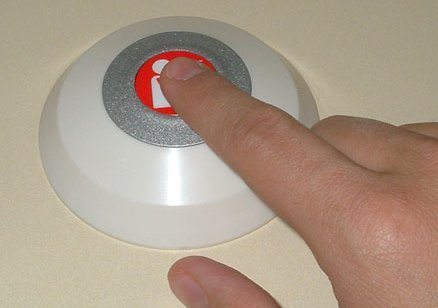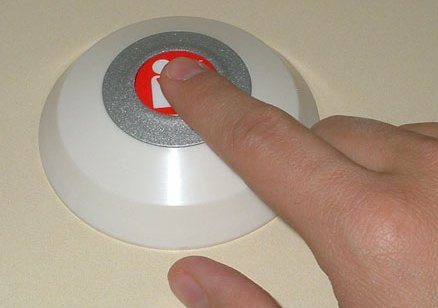
How to come up with a touchless interactive option that won’t embarrass users
September 6, 2011 by Dave Haynes
 Suppose you wanted to use digital displays to keep staff informed and also make video information available on demand, but the workplace is way too grimy to use a touch screen.
Suppose you wanted to use digital displays to keep staff informed and also make video information available on demand, but the workplace is way too grimy to use a touch screen.
Staff in industrial settings who spend their days around dirt, dust and grease are not good candidates for flicking, swiping and pushing a touchscreen in the break room to sort menus and information. The screen would be a mess in short order, and in many cases, the screen is enclosed to protected against all the crud.
The cool kids in this sector would immediately raise the idea of using Kinect motion capture sensors, so staff could keep their grimy mitts off the screen and instead gesture to make things happen on it. Wow. Except only about 1 in 10 staffers would know what to do or would willingly flap their arms in front of their colleagues.
And a Kinect hack requires development, as well as a user learning curve.
A client we have was wrestling with the whole touch screen challenge thing – to make monthly messages from the president launch on demand and get safety videos more readily available. The solution turned out to be pretty simple.
A touchscreen is just responding to triggers. Someone touches an icon on a screen and the software is mapped to cause a certain file to play when that event happens. The same thing can happen with other things as triggers, and in this case, we suggested mechanical buttons – like the sort of buttons you’d see on slot machines and vending machines. Buttons than are built to be pushed and pushed and pushed.
The buttons would feed the triggered event into something called a PIC processor (essentially a micro-controller), which would then output a serial command that could be read and understood immediately by whatever digital signage software application is running.
So when someone walked into the break room and wanted to review the training video on forklift safety, they’d push button two (because the prompt on the screen said so) and that trigger would launch the appropriate video.
This does not end up with the deep level of engagement possibilities of something with a virtual keyboard that can take data entry, but there are many, many situations like this in which just making material available on demand is huge, and data input would never be required.
There’s also some interesting training requirements things that could be baked in if staff walk around with access cards and these displays had attached RFID/NFC readers. Swipe or tap, video launches, and now there’s a record that employee has seen that safety demo.
I know a few companies, including the digital signage software platform this client used, can easily work with externally triggered serial commands to drive content. PIC processors are not something you get at Best Buy, and they require customization. But they are not exotic things and easily built (and at quite low cost). A company I worked for a couple of years – Digital View – has a lot of experience with them, and there are no doubt others.
So, grimy fingers should not keeps a company’s digital staff communications efforts from going interactive. There are some pretty easy, effective workarounds.



Leave a comment